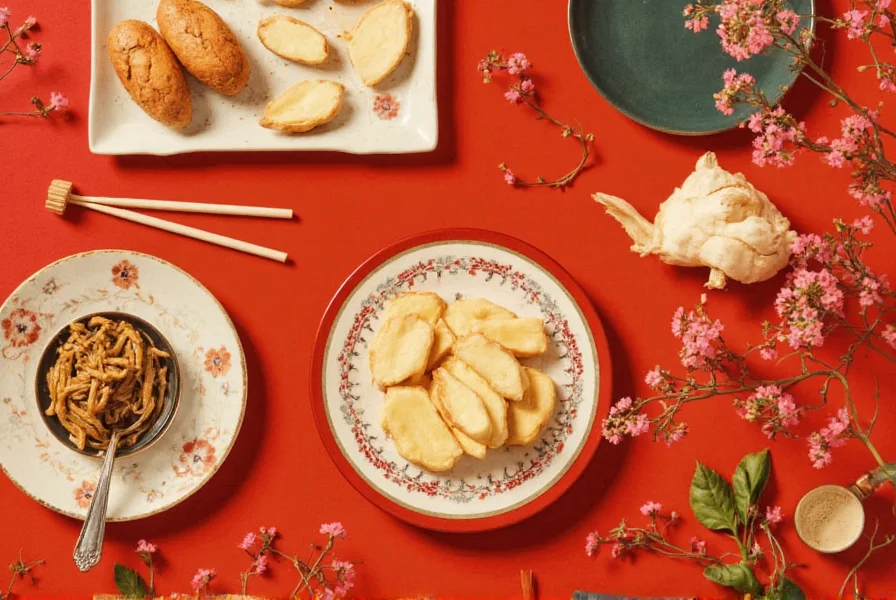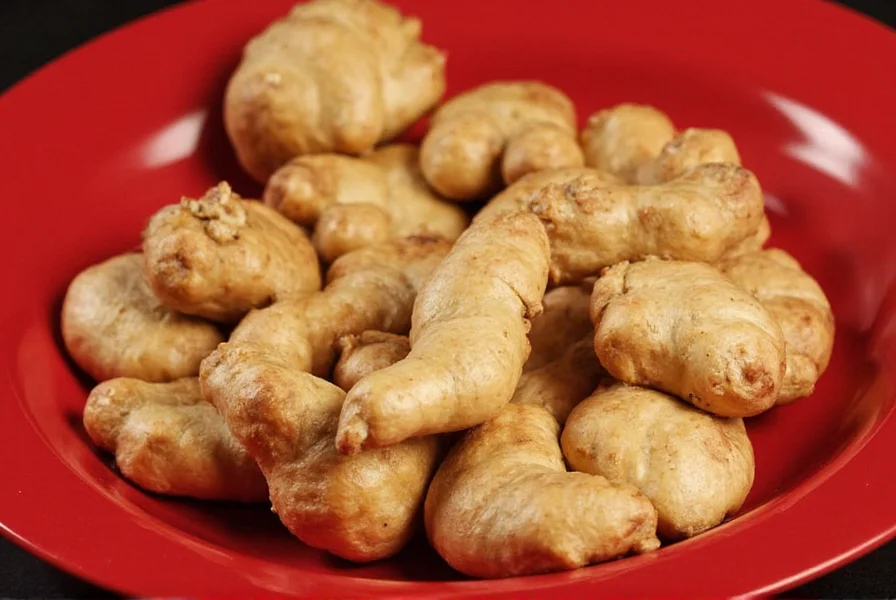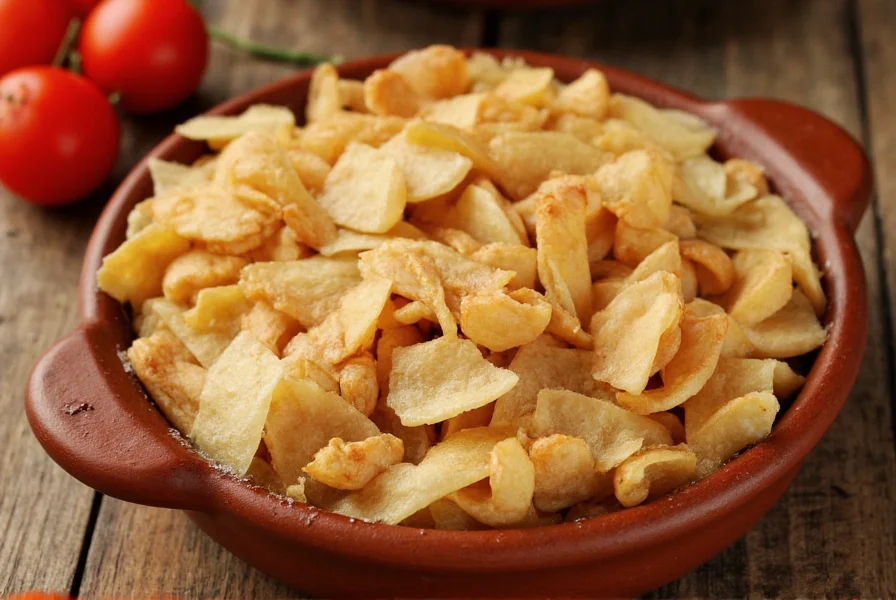When exploring the concept of lucky ginger, it's essential to understand its deep roots in cultural traditions rather than as a specific commercial product. Ginger's association with luck spans multiple civilizations, with documented practices dating back thousands of years in Chinese, Indian, and Southeast Asian cultures. This aromatic rhizome earned its fortunate reputation through both practical properties and symbolic interpretations that continue to influence modern traditions.
The Historical Roots of Ginger's Lucky Reputation
Ginger's journey as a symbol of prosperity began along ancient trade routes where its value often equaled that of gold. In traditional Chinese medicine, ginger (shēng jiāng) has been used for over 2,000 years not just for health, but as a protective element against negative influences. The Chinese character for ginger (姜) shares phonetic elements with characters representing prosperity, creating linguistic associations that reinforced its lucky status.
During Lunar New Year celebrations across East and Southeast Asia, fresh ginger roots often appear in prosperity baskets alongside tangerines and other symbolic foods. Business owners traditionally place ginger near cash registers, believing its vibrant yellow color attracts wealth energy. These practices aren't merely superstitions—they represent cultural continuity where ginger's natural properties align with philosophical concepts of vitality and positive energy flow.

Cultural Variations in Lucky Ginger Practices
Different cultures have developed unique interpretations of ginger's auspicious qualities. In Japan, pickled ginger (gari) served with sushi isn't just for palate cleansing—the bright pink color symbolizes new beginnings and good fortune. Filipino households often hang ginger garlands during fiestas as protective charms, while in India, ginger features in Ayurvedic rituals designed to attract prosperity.
| Culture | Lucky Ginger Practice | Symbolic Meaning |
|---|---|---|
| Chinese | Fresh ginger in red cloth during New Year | Attracting wealth and warding off evil |
| Japanese | Pickled ginger with meals | New beginnings and positive energy |
| Thai | Ginger root amulets | Protection and business success |
| Hawaiian | Ginger lei for special occasions | Health and prosperity blessings |
Separating Cultural Tradition from Scientific Fact
While ginger's cultural significance as a lucky symbol remains strong, modern research confirms actual health benefits that may have contributed to its esteemed status. Scientific studies validate ginger's anti-inflammatory properties, digestive benefits, and immune system support—qualities that naturally align with concepts of vitality and wellbeing central to many prosperity traditions.
Researchers at the University of Michigan found that ginger contains over 40 antioxidant compounds, potentially explaining why traditional cultures associated it with vitality and protection. However, no scientific evidence supports ginger directly influencing financial luck or supernatural fortune. The "lucky" designation stems from cultural interpretation of its tangible health benefits and vibrant physical properties.
Respectful Incorporation of Lucky Ginger Traditions
For those interested in exploring these traditions, authentic engagement matters more than superficial adoption. Rather than treating lucky ginger practices as mere superstitions, understanding their cultural context creates meaningful connections. Many Asian communities welcome respectful interest in their traditions when approached with genuine curiosity rather than cultural appropriation.
When incorporating ginger traditions, consider these thoughtful approaches:
- Use fresh, high-quality ginger rather than artificial representations
- Learn the specific cultural context behind practices you adopt
- Support authentic cultural practitioners rather than commercialized imitations
- Focus on ginger's actual health benefits alongside symbolic meaning

Modern Interpretations of an Ancient Tradition
Today's interpretations of lucky ginger blend tradition with contemporary lifestyles. Urban practitioners might keep a small ginger plant in their workspace rather than fresh roots, while chefs incorporate ginger symbolism into modern cuisine. The key element remains consistent—recognizing ginger's dual value as both a practical health resource and a meaningful cultural symbol.
Understanding the authentic cultural significance of lucky ginger traditions helps preserve their meaning while allowing for respectful adaptation. Whether displayed during celebrations, used in cooking, or incorporated into wellness routines, ginger's enduring association with positive energy continues to resonate across generations and cultures.
Frequently Asked Questions
What is the origin of ginger being considered lucky?
Ginger's association with luck originated in ancient Chinese culture over 2,000 years ago, where its vibrant yellow color symbolized gold and prosperity. Traditional Chinese medicine texts documented ginger's health benefits, which became intertwined with concepts of vitality and positive energy flow, eventually evolving into prosperity symbolism across multiple Asian cultures.
How do different cultures use ginger for good luck?
Cultural practices vary significantly: Chinese traditions feature fresh ginger in red cloth during Lunar New Year; Japanese cuisine serves pickled ginger (gari) with meals to symbolize new beginnings; Thai communities create ginger root amulets for business protection; and Hawaiian culture incorporates ginger into ceremonial leis for prosperity blessings. Each culture has developed unique interpretations based on local traditions.
Is there scientific evidence supporting ginger's lucky properties?
While no scientific evidence confirms ginger directly influences luck or fortune, research validates health benefits that likely contributed to its esteemed status. Studies show ginger contains over 40 antioxidant compounds with anti-inflammatory properties, digestive benefits, and immune support. These tangible health advantages align with traditional concepts of vitality and wellbeing that formed the basis for its symbolic association with positive energy.
How should I properly display lucky ginger in my home or business?
Authentic practices recommend using fresh, high-quality ginger roots rather than artificial representations. In Chinese tradition, placing ginger near entryways or cash registers wrapped in red cloth during Lunar New Year is common. The key is understanding the cultural context—many traditions emphasize replacing ginger when it shows signs of deterioration, symbolizing the continuous flow of positive energy rather than a static charm.
Can I incorporate lucky ginger traditions respectfully as a non-Asian person?
Yes, with proper understanding and respect. Focus on learning the specific cultural context behind practices rather than superficial adoption. Support authentic cultural practitioners, use high-quality natural ginger rather than commercialized imitations, and prioritize understanding ginger's actual health benefits alongside symbolic meaning. The most respectful approach emphasizes appreciation rather than appropriation by acknowledging the tradition's origins and meaning.











 浙公网安备
33010002000092号
浙公网安备
33010002000092号 浙B2-20120091-4
浙B2-20120091-4